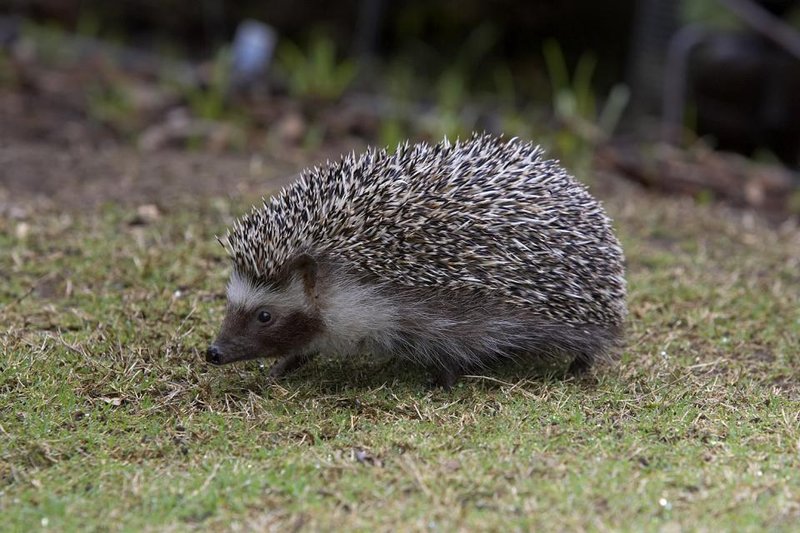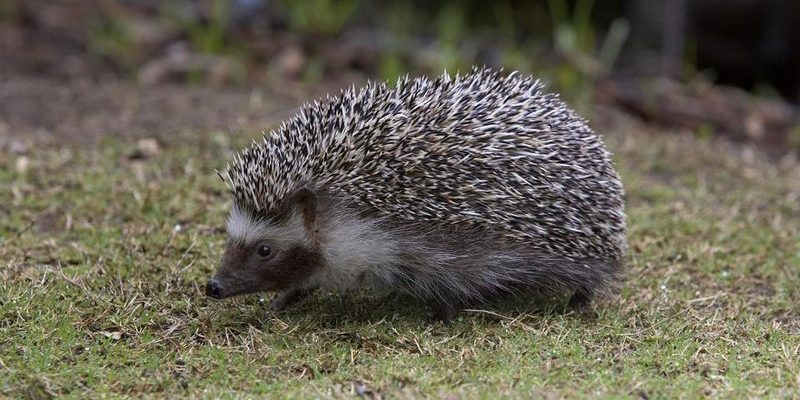
The Four-Toed Hedgehog is a fascinating little creature that many people don’t know much about. Imagine a creature that looks like a tiny, spiky ball wandering around the grass at dusk, exploring its world. These adorable hedgehogs are not only cute but also play a vital role in their ecosystems. If you’ve ever stumbled across one in your yard or learned about them in documentaries, you know they can be quite endearing, but there’s much more to discover!
Native to parts of Africa and the Middle East, the Four-Toed Hedgehog has some unique characteristics that set it apart from its relatives. With its small size and charming antics, it captures the hearts of many wildlife enthusiasts. So, let’s take a closer look at what makes the Four-Toed Hedgehog so special, from its habitat and diet to its behavior and conservation status.
Overview of the Four-Toed Hedgehog
| Scientific Name: | Atelerix albiventris |
| Size: | 10 to 12 inches (25 to 30 cm) long |
| Weight: | 1 to 2 pounds (0.45 to 0.91 kg) |
| Habitat: | Grasslands, savannas, and forests |
| Diet: | Insects, small invertebrates, and fruits |
| Life Expectancy: | 3 to 7 years in the wild |
| Conservation Status: | Least Concern |
Physical Characteristics
The Four-Toed Hedgehog has some truly striking features. As the name suggests, this little critter has four toes on each foot—quite a unique trait among its relatives! With a body covered in sharp quills, it’s almost like wearing armor. These quills serve an important purpose: protection. When threatened, the hedgehog can curl up into a tight ball, showcasing its spiky exterior to deter predators.
In terms of coloration, the Four-Toed Hedgehog usually sports a beautiful mix of brown, white, and cream shades. This color serves a dual purpose—helping it to blend into its surroundings and providing camouflage against the natural backdrop. Their small, round faces are expressive and charming, complete with tiny black eyes and a small snout that’s perfect for foraging.
Even their size is noteworthy. Generally, they measure about 10 to 12 inches in length, making them compact yet adventurous little explorers. This makes them quite appealing to pet lovers, as they are small enough to be kept in homes (though they require specific care). The combination of their looks and their behavior makes the Four-Toed Hedgehog a standout in the animal kingdom.
Habitat and Distribution
You might be wondering where you can find these spiky little creatures. The Four-Toed Hedgehog primarily inhabits regions in Africa, particularly in countries like Tunisia, Morocco, and parts of East Africa. It prefers environments like open grasslands, savannas, and even lightly wooded areas. These habitats provide ample cover for the hedgehog to hide and forage for food.
In the wild, they’ve adapted well to their environment, where they can burrow into the ground to create shelters. These burrows provide safety and a comfortable place to rest during the day while they’re dormant. This nocturnal creature thrives in the coolness of the night when it ventures out to hunt for insects and other tasty morsels.
However, as human activities expand, these habitats face threats. Urbanization and agriculture can disrupt their natural environments, forcing them to adapt or relocate. Habitat loss is one of the significant concerns for the conservation of the Four-Toed Hedgehog, as it directly affects their ability to find food and shelter.
Diet and Feeding Habits
The diet of the Four-Toed Hedgehog is quite diverse, making it an opportunistic forager. They typically feast on insects, worms, and other small invertebrates. Picture a hedgehog rummaging through the leaf litter, snuffling and snorting as it searches for a tasty snack. Their keen sense of smell helps them locate food sources hidden beneath the surface.
In addition to insects, they don’t shy away from the occasional fruit or vegetable. When you think about it, it’s similar to a tiny furry vacuum cleaner, working its way through the underbrush! Their flexible diet allows them to thrive in various environments, as they can adapt to whatever food sources are available. For a hedgehog, a buffet of bugs is like a dream come true.
However, it’s essential to note that their feeding habits can also lead to challenges. In some areas, human interference—like using pesticides—can reduce their food supply. This makes it crucial for us to support organic gardening practices that create healthier environments for hedgehogs and other wildlife.
Behavior and Social Structure
The Four-Toed Hedgehog is known for its solitary nature. Unlike some animals that thrive in groups, these little creatures are generally more comfortable on their own. They establish their territories and are quite particular about their personal space, often marking their areas with scent. Imagine having your cozy little bubble—this is how these hedgehogs operate.
Despite their solitary tendencies, they are quite curious and will explore their surroundings as they search for food or new territories. Their nocturnal behavior adds an element of mystery to their lives, as they come out to play and forage while the world sleeps. They’re not exactly social butterflies, but they do communicate through various sounds, body language, and even scents.
During mating season, however, things change. Males and females will come together, and males may compete for the attention of females. Once they mate, the mother will typically raise her young alone, demonstrating their independent nature once again. The cycle of life continues, and the mother looks after her hoglets, teaching them how to forage and survive on their own.
Conservation Status and Threats
The Four-Toed Hedgehog is classified as “Least Concern” by the IUCN, which sounds reassuring at first. However, this doesn’t mean they’re entirely safe from threats. Although they have a relatively stable population, habitat loss poses a significant risk. As cities expand and agricultural land increases, these hedgehogs lose their homes and food sources.
Human activity is not only encroaching on their habitat but also putting them at risk through the use of pesticides and chemicals that can contaminate their food supply. Imagine for a moment being a hedgehog, keen on munching on a delicious worm, only to find it contaminated—it could be life-threatening!
Conservation efforts are essential to ensure the future of the Four-Toed Hedgehog. In many regions, wildlife organizations are working to create safe havens where hedgehogs can thrive without the pressures of urbanization. Educating the public about these charming creatures and their ecological role can help foster a sense of responsibility toward their preservation.
FAQ
Can Four-Toed Hedgehogs be kept as pets?
Yes, Four-Toed Hedgehogs can be kept as pets, but they require specific care and a controlled environment. It’s important to ensure they have enough space to roam and explore, as well as a proper diet and habitat setup. You should also check local laws and regulations, as keeping hedgehogs as pets isn’t allowed everywhere.
What do Four-Toed Hedgehogs need in their habitat?
In captivity, Four-Toed Hedgehogs need a spacious enclosure with plenty of ventilation and places to hide. Providing bedding that allows them to burrow, such as shredded paper or aspen shavings, is essential. They also need a designated area for food and water, and temperature control to keep them warm and comfortable.
How long do Four-Toed Hedgehogs live?
In the wild, Four-Toed Hedgehogs typically live between 3 to 7 years. However, in captivity, with appropriate care, they might live longer. Their lifespan can greatly depend on diet, habitat conditions, and health care.
Are Four-Toed Hedgehogs nocturnal?
Yes, Four-Toed Hedgehogs are nocturnal, meaning they are most active during the night. This behavior allows them to avoid daytime predators and search for food when it’s cooler and more comfortable.
How do Four-Toed Hedgehogs defend themselves?
Four-Toed Hedgehogs have a unique defense mechanism—they can curl up into a tight ball, revealing their sharp quills to potential threats. This physical barrier makes it difficult for predators to attack. They also rely on their ability to camouflage with their surroundings to avoid detection.
What is the breeding behavior of Four-Toed Hedgehogs?
During mating season, male Four-Toed Hedgehogs may compete for females. After mating, the female gives birth to a litter of hoglets, typically ranging from 2 to 6 babies. The mother is responsible for raising her young alone, teaching them how to forage for food.
Do Four-Toed Hedgehogs hibernate?
No, Four-Toed Hedgehogs do not hibernate as some other species do. Instead, they remain active throughout the year, although their activity levels may decrease in colder months. They find shelter and burrow whenever the temperature drops significantly.
What threats do Four-Toed Hedgehogs face?
Four-Toed Hedgehogs face various threats, including habitat loss due to urbanization, agricultural development, and pesticide exposure. These factors can reduce their food supply and disrupt their natural habitats, making conservation efforts crucial for their survival.
Can Four-Toed Hedgehogs swim?
Yes, Four-Toed Hedgehogs can swim! While not their preferred activity, they are capable of swimming if necessary. In the wild, they may need to cross water bodies or escape predators, showcasing their adaptability in various situations.
How can I help Four-Toed Hedgehogs in my area?
You can support Four-Toed Hedgehogs by creating a wildlife-friendly garden, avoiding pesticides, and ensuring there are safe habitats for them to thrive. Educating others about their needs and advocating for wildlife-friendly practices can also make a big difference in helping these charming creatures.

